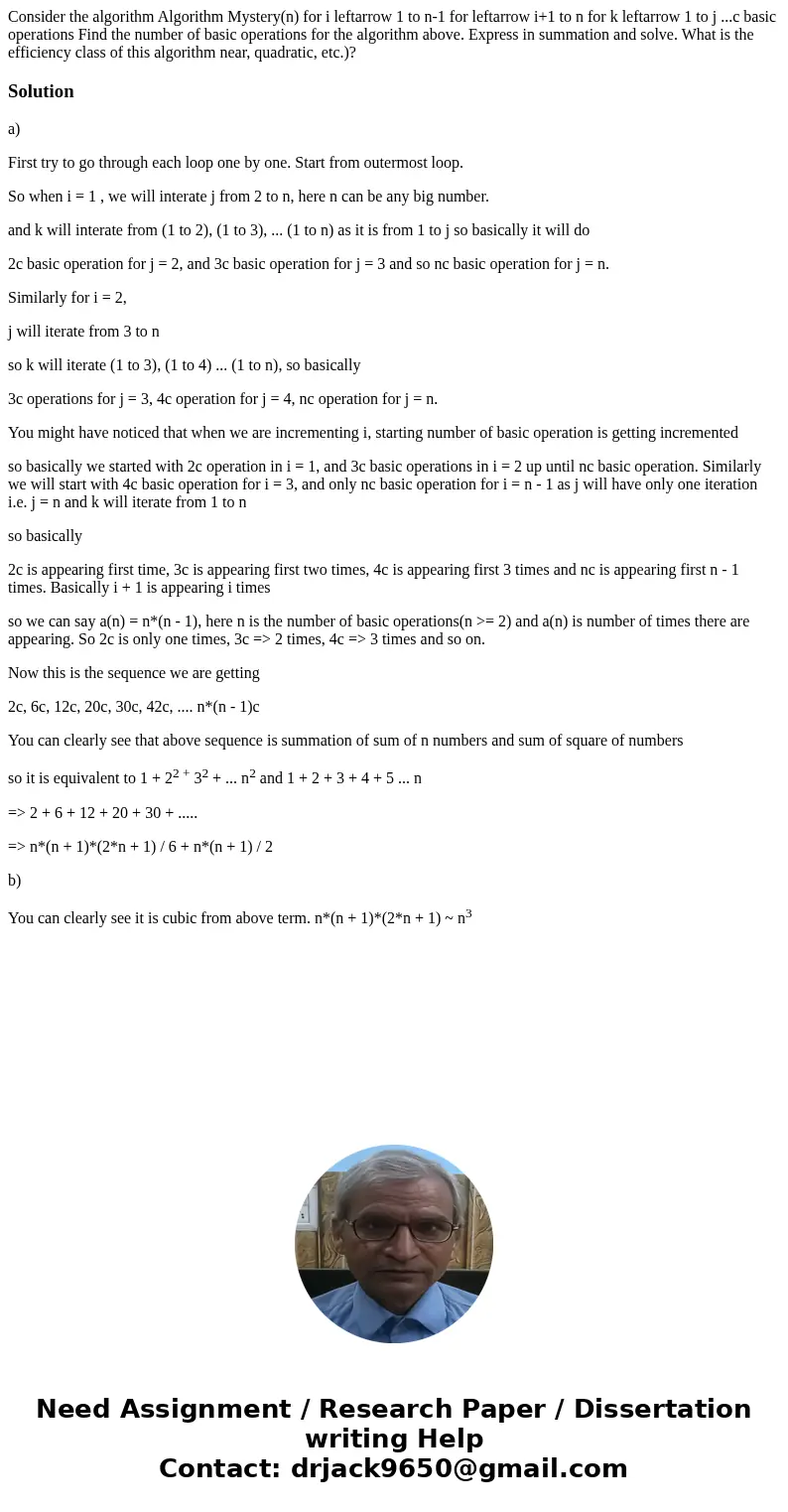Consider the algorithm Algorithm Mysteryn for i leftarrow 1
Solution
a)
First try to go through each loop one by one. Start from outermost loop.
So when i = 1 , we will interate j from 2 to n, here n can be any big number.
and k will interate from (1 to 2), (1 to 3), ... (1 to n) as it is from 1 to j so basically it will do
2c basic operation for j = 2, and 3c basic operation for j = 3 and so nc basic operation for j = n.
Similarly for i = 2,
j will iterate from 3 to n
so k will iterate (1 to 3), (1 to 4) ... (1 to n), so basically
3c operations for j = 3, 4c operation for j = 4, nc operation for j = n.
You might have noticed that when we are incrementing i, starting number of basic operation is getting incremented
so basically we started with 2c operation in i = 1, and 3c basic operations in i = 2 up until nc basic operation. Similarly we will start with 4c basic operation for i = 3, and only nc basic operation for i = n - 1 as j will have only one iteration i.e. j = n and k will iterate from 1 to n
so basically
2c is appearing first time, 3c is appearing first two times, 4c is appearing first 3 times and nc is appearing first n - 1 times. Basically i + 1 is appearing i times
so we can say a(n) = n*(n - 1), here n is the number of basic operations(n >= 2) and a(n) is number of times there are appearing. So 2c is only one times, 3c => 2 times, 4c => 3 times and so on.
Now this is the sequence we are getting
2c, 6c, 12c, 20c, 30c, 42c, .... n*(n - 1)c
You can clearly see that above sequence is summation of sum of n numbers and sum of square of numbers
so it is equivalent to 1 + 22 + 32 + ... n2 and 1 + 2 + 3 + 4 + 5 ... n
=> 2 + 6 + 12 + 20 + 30 + .....
=> n*(n + 1)*(2*n + 1) / 6 + n*(n + 1) / 2
b)
You can clearly see it is cubic from above term. n*(n + 1)*(2*n + 1) ~ n3

 Homework Sourse
Homework Sourse